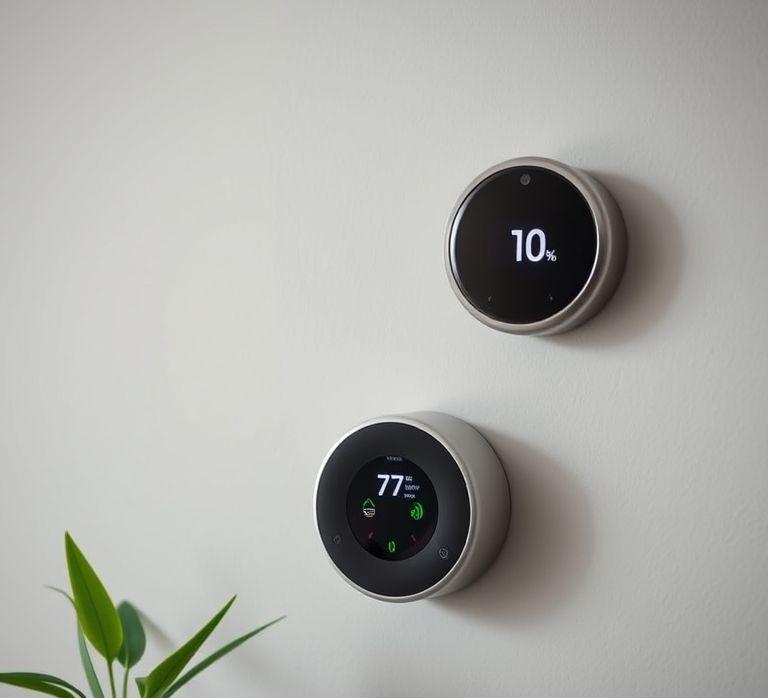Beyond Temperature Control: Smart Thermostats with Integrated Air Quality Monitoring
Smart thermostats have revolutionized home climate control, offering energy savings and convenience. However, the latest generation goes beyond simply adjusting the temperature. Many now include sophisticated air quality monitoring features, tracking humidity, volatile organic compounds (VOCs), and even CO2 levels. This article explores the benefits of these advanced thermostats and reviews some models that can help you create a healthier and smarter home.
The Importance of Indoor Air Quality
While we often think about outdoor air pollution, indoor air quality can be significantly worse. We spend a large portion of our lives indoors, making it crucial to understand and manage the air we breathe at home. Poor indoor air quality can lead to various health issues, including:
- Allergies and asthma exacerbation
- Respiratory infections
- Headaches and fatigue
- Irritation of the eyes, nose, and throat
- Long-term health problems like cardiovascular disease
Factors that contribute to poor indoor air quality include inadequate ventilation, household cleaning products, building materials, and even our own activities like cooking and showering. Monitoring parameters like humidity, VOCs, and CO2 can help us identify and address these issues proactively.
Decoding the Air Quality Metrics
Understanding what these air quality metrics mean is key to improving your indoor environment:
- Humidity: High humidity promotes mold growth and dust mite proliferation, triggering allergies. Low humidity can cause dry skin and respiratory irritation. Aim for a relative humidity between 30-50%.
- VOCs (Volatile Organic Compounds): These are emitted from various sources, including paints, cleaning supplies, furniture, and even air fresheners. High VOC levels can cause headaches, nausea, and long-term health effects.
- CO2 (Carbon Dioxide): Elevated CO2 levels indicate poor ventilation. While not directly toxic at typical indoor levels, high CO2 can cause drowsiness and reduced cognitive function. It also serves as a proxy for the buildup of other indoor pollutants.
Smart thermostats with integrated sensors continuously monitor these parameters, providing real-time feedback and alerts when levels exceed recommended thresholds. This information empowers you to take action, such as increasing ventilation, adjusting humidity levels, or eliminating sources of VOCs.
Smart Thermostat Models with Air Quality Monitoring
Several smart thermostats now offer comprehensive air quality monitoring. Here are a few examples:
- ecobee Smart Thermostat Premium: This model tracks temperature, humidity, and VOCs. It integrates seamlessly with other smart home devices and provides personalized recommendations for improving air quality.
- Nest Learning Thermostat (3rd Gen) with Nest Protect: While the Nest thermostat itself doesn’t directly monitor air quality, pairing it with the Nest Protect smoke and carbon monoxide detector provides CO detection. Nest Protect also monitors for rapidly rising CO levels that could indicate a fire.
- Awair Element: While not a thermostat, the Awair Element is a dedicated air quality monitor that tracks PM2.5, VOCs, CO2, temperature, and humidity. It can integrate with some smart thermostats through IFTTT to trigger actions based on air quality readings.
When choosing a smart thermostat with air quality monitoring, consider factors like the types of pollutants monitored, the accuracy of the sensors, the ease of use of the app, and compatibility with your existing smart home ecosystem. Also, research the cost of replacement sensors if the model you choose requires them.
Creating a Healthier, Smarter Home
Investing in a smart thermostat with air quality monitoring is an investment in your health and well-being. By understanding the air you breathe, you can take proactive steps to improve your indoor environment. This might involve improving ventilation by opening windows or using air purifiers, reducing sources of VOCs by choosing eco-friendly cleaning products, or adjusting your humidifier or dehumidifier to maintain optimal humidity levels. Ultimately, the goal is to create a healthier, more comfortable, and smarter home for you and your family.
Smart thermostats with integrated air quality monitoring are more than just temperature controllers; they are valuable tools for creating a healthier living environment. By tracking humidity, VOCs, and CO2, these devices provide insights into your indoor air quality, enabling you to take proactive steps to mitigate potential health risks. Consider investing in one of these advanced thermostats to enjoy a smarter and healthier home.



